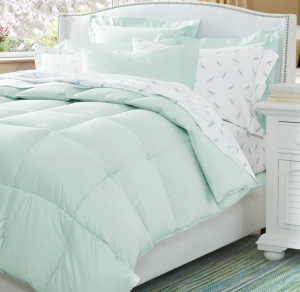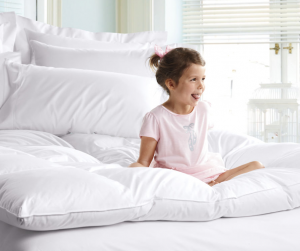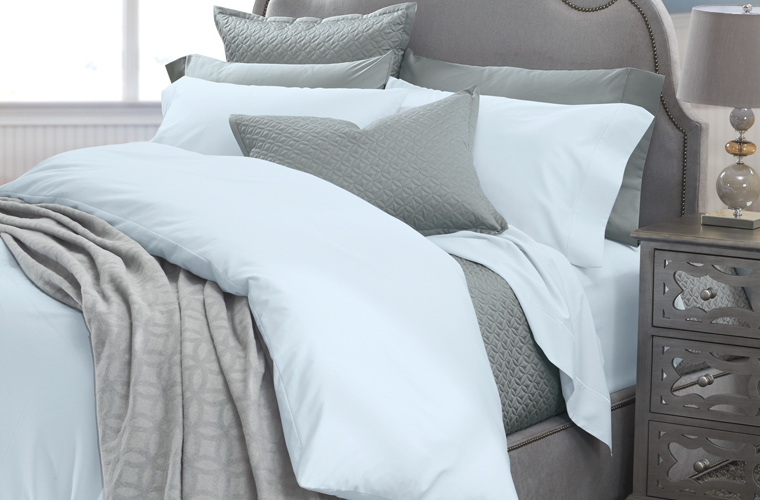Is your bedroom “sleep-positive”?
Here’s a fun fact: according to the National Institute of Health, we spend more than one-third of our lives sleeping.
That’s a lot of time spent in one room!
But when is the last time you actually considered the interior design of your bedroom? More importantly, when is the last time you considered how the interior design of your bedroom may affect the quality of your sleep?
Design to unwind
When designing a room for the home, one of the most important things to consider is what function that particular room will serve.
Just as you would decorate a guest room to cater towards a visitor traveling from away, it’s important to take into consideration the main reason your own bedroom exists: to fall asleep.
Thankfully, there’s many different aspects of the bedroom that can be adjusted to your liking to insure you get a better night’s rest.
From choosing specific color tones, to selecting certain fabrics, we’ll walk you through some of the key changes you can make to your own bedroom to be more “sleep-positive”.
 Dream in Blue
Dream in Blue
Did you know that the color of your bedroom can actually affect the quality of your sleep?
According to Sleep.org, studies have shown that cool colors, especially light blue and green, have been show to improve sleep and even lower blood pressure, as opposed to red, yellow, and other warmer colors.
And that goes for more than wallpaper.
To make your bedroom as sleep-positive as possible, start by choosing colors for your bed that promote sleep, rather than hinder it.
When selecting bedding for your room, make sure to coordinate colors with new matching sheets as well.
 Finding the right temperature
Finding the right temperature
Speaking of sheets, did you know that 100% cotton fabric sheets help promote air-flow and breath ability, to keep you warm without overheating?
Finding the right temperature is crucial to maintaining sleep throughout the night, whether it be during the summer or winter.
According to the National Sleep Foundation, the ideal temperature of your room should be somewhere between 60-67 degrees to keep you snoozing throughout the night.
If you happen to live in a colder climate, consider flannel during the winter months for extra comfort and warmth.
Let there be no light
One of the most important aspects of creating a sleep-positive bedroom, is controlling the amount of light that enters your room.
And that doesn’t just mean natural light. According to the Sleep Foundation, light emitted from electronics such as cell-phones, laptops, televisions and other devices can cause disturbances in sleep as well.
If you’d like to add some atmosphere to your room, try using flame less candles, an ambient night lamp or even an oil diffusing light with lavender for additional relaxation.
 A Quality Mattress Matters
A Quality Mattress Matters
Last but not least, comes the shining star of your bedroom: the mattress.
According to BetterSleep.org, mattresses should be changed every five to seven years to maximize quality of sleep.
Looking for even more additional comfort?
A featherbed, or quality mattress pad might be just the answer for you.
While you’re making over your bed, be sure to invest in a quality pillow that supports your head and spine as well.
While there’s no cure-all for insomnia, the changes you make to your bedroom will certainly add up in the long run, and by keeping a clean, organized place of living, your mind will naturally feel at ease as well.





No Comments